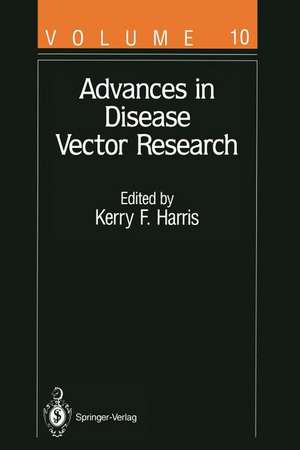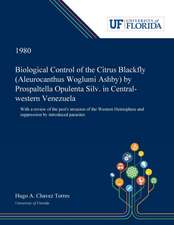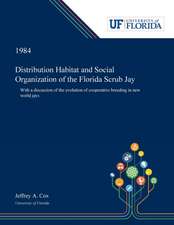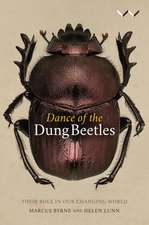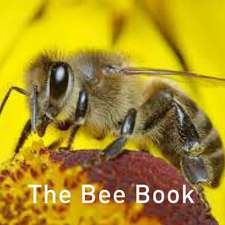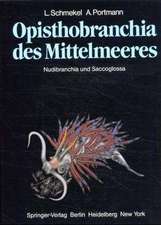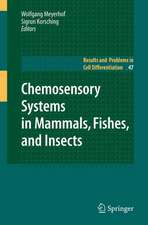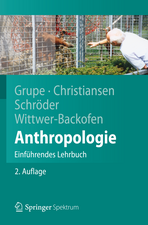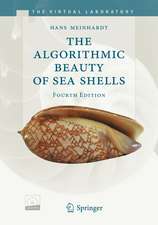Advances in Disease Vector Research: Advances in Disease Vector Research, cartea 10
Contribuţii de El Desouky Ammar, Y. Antignus, T.R. Burkot, E.P. Camargo, Y. Chinzei, S. Cohen, D. Gonsalves, P.M. Graves, H.H. Hagedorn, R. Hull, E.I. Korenberg, Yu.V. Kovalevskii, G.W. Otim-Nape, M.K. Shaw, A.J. Shelley, W.J. Tabachnick, DeMar Taylor, J. M. Thresh, F.G. Wallace, S.-D. Yeh, A.S. Youngen Limba Engleză Paperback – 17 sep 2011
Din seria Advances in Disease Vector Research
-
 Preț: 387.20 lei
Preț: 387.20 lei - 15%
 Preț: 637.13 lei
Preț: 637.13 lei -
 Preț: 393.13 lei
Preț: 393.13 lei -
 Preț: 384.70 lei
Preț: 384.70 lei -
 Preț: 384.48 lei
Preț: 384.48 lei -
 Preț: 393.74 lei
Preț: 393.74 lei
Preț: 647.59 lei
Preț vechi: 761.87 lei
-15% Nou
Puncte Express: 971
Preț estimativ în valută:
123.93€ • 134.57$ • 104.10£
123.93€ • 134.57$ • 104.10£
Carte tipărită la comandă
Livrare economică 22 aprilie-06 mai
Preluare comenzi: 021 569.72.76
Specificații
ISBN-13: 9781461275961
ISBN-10: 1461275962
Pagini: 444
Ilustrații: XXV, 412 p.
Dimensiuni: 155 x 235 x 23 mm
Greutate: 0.62 kg
Ediția:Softcover reprint of the original 1st ed. 1994
Editura: Springer
Colecția Springer
Seria Advances in Disease Vector Research
Locul publicării:New York, NY, United States
ISBN-10: 1461275962
Pagini: 444
Ilustrații: XXV, 412 p.
Dimensiuni: 155 x 235 x 23 mm
Greutate: 0.62 kg
Ediția:Softcover reprint of the original 1st ed. 1994
Editura: Springer
Colecția Springer
Seria Advances in Disease Vector Research
Locul publicării:New York, NY, United States
Public țintă
ResearchCuprins
1 Hormonal Regulation of Vitellogenin Biosynthesis in Ticks.- Vitellogenesis in Ticks.- Vitellogenin in Ticks.- Site of Vitellogenin Synthesis.- Vitellogenin Biosynthesis and Processing.- Hormonal Control of Vitellogenesis.- Regulation Factors of Vitellogenesis and Ovarian Development.- Conclusion.- References.- 2 The Biology of Theileria Species in Ixodid Ticks in Relation to Parasite Transmission.- Theileria Species.- Ixodid Vectors.- Development Cycle of Theileria in Ticks.- Factors that Control the Dynamic of Theileria Transmission.- Conclusions.- References.- 3 A Model for Relationships among the Tick-Borne Encephalitis Virus, Its Main Vectors, and Hosts.- Basic Principles.- Analysis of Former Schemes for TBE Virus Circulation.- Generation Balance of the Main Virus Vector.- The Virus Population Balance in Relation to the Development of the Main Vector Generation.- Major Ecological Aspects of the TBE Virus Life Scheme.- Analysis of the Model.- Principles of Dynamics of the Epizootic Process.- Conclusions.- References.- 4 Genetics of Insect Vector Competence for Arboviruses.- and Background.- Vector Competence.- Genetics of Vector Competence.- Molecular Biology and Genetics of Vector Competence.- Conclusions.- References.- 5 The Endocrinology of the Adult Female Mosquito.- Juvenile Hormone.- Ecdysteroids.- Peptides.- Hormonal Regulation of Egg Development in Mosquitoes Other Than Aedes aegypti.- Implications for Vector Biology.- Conclusions.- References.- 6 Human Malaria Transmission: Reconciling Field and Laboratory Data.- Measuring Malaria Transmission.- Factors Influencing Malaria Transmission.- Conclusions.- References.- 7 Factors Affecting Filarial Transmission by Simuliids.- The Filarial Parasite.- The Simuliid Vector.- Filaria Transmission.- Conclusions.- References.- 8 Strategies for Controlling African Cassava Mosaic Geminivirus.- Possible Control Measures.- Integration of Control Measures.- Conclusions.- References.- 9 Practices and Perspective of Control of Papaya Ringspot Virus by Cross Protection.- Generation of Mild Virus Strains of PRV.- Large Scale Application in Taiwan.- Application in Hawaii.- Application in Other Parts of the World.- Potential Disadvantages.- Problems of Strain-Specific Protection.- Search for Mild Strain Derived from Local Severe Strains.- Cross Protection Integrated with Tolerant Varieties.- Construction of Attenuated Strains by Recombinant DNA Technique.- Innovative Approach on Genetically Engineered Cross Protection.- Concluding Remarks.- References.- 10 Tomato Yellow Leaf Curl Virus, a Whitefly-Borne Geminivirus of Tomatoes.- Host Range.- Cytopathology of TYLCV.- Virus Purification.- Serological Relationships.- The Molecular Biology of TYLCV.- TYLCV-Like Geminiviruses.- The Phylogeny of TYLCV.- Virus-Vector Relationships Biological Interaction with the Vector.- Epidemiology.- Control.- Concluding Remarks.- References.- 11 Propagative Transmission of Plant and Animal Viruses by Insects: Factors Affecting Vector Specificity and Competence.- Transmission Characteristics of Propagative Insect-Borne Viruses.- Sequence of Events in a Propagative Transmission Cycle.- Intrinsic Factors Affecting Vector Specificity, Efficiency, and Competence.- Extrinsic Factors Affecting Vector Competence.- Pathogenicity and “Modulation” of Viruses in Their Insect Vectors.- Conclusions and Prospects.- References.- 12. Vectors of Plant Parasites of the Genus Phytomonas (Protozoa, Zoomastigophorea, Kinetoplastida).- Family Trypanosomatidae.- Genus Phytomonas.- Trypanosomatids in Hemiptera.- Hemiptera as Vectors.-Mouthparts and Salivary Glands.- Evidence Linking Hemiptera to Transmission of Phytomonas of Latex Plants.- Habits of Vectors of Latex Phytomonas.- Discovery of Transmission of Phloem-Infecting Phytomonas.- Discovery of Transmission of Fruit-Infecting Phytomonas.- Discovery of Phytomonas in Insects.- Cycle in Insect.- Opportunities for Future Work.- References.- 13 Molecular Biology of Plant Virus-Vector Interactions.- Types of Virus Vectors.- Virus-Vector Interactions.- Specific Vectors.- Sites of Interactions in Vectors.- Virus Genes Involved in Vector Interactions.- Discussion.- References.
